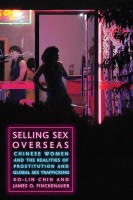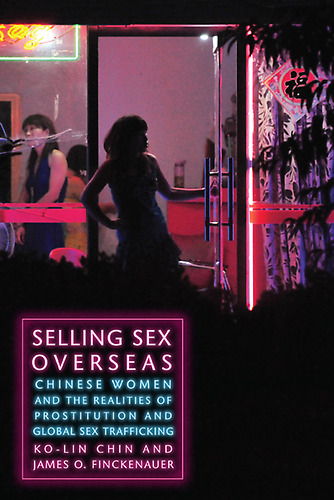 Author: Ko-Lin Chin and James O. Finckenauer
Author: Ko-Lin Chin and James O. Finckenauer
Publisher: New York University Press – 311 pages
Book Review by: Paiso Jamakar
It is not just in hundreds. It is not even just in the thousands. Every year, tens of thousands of Chinese women travel to other countries in Asia and the United States to sell sex.
But that is just one picture in a collage of probably hundreds of thousands of sex workers the world over. Prostitutes from many countries go to many other countries to engage in their trade.
This book studies the activities and behavior of women, sex ring operators, law enforcers, NGOs and other key informants in the business of sex in eight Asian countries – China, Hong Kong, Indonesia, Macau, Malaysia, Singapore, Taiwan, Thailand, and two U.S. cities: Los Angeles and New York.
What makes this book unique is that it knocks off the commonly-held assumption that such women (and girls) are only sex slaves, or even that they are victims: that they are unwilling participants in commercial sex. No, far from it, as you will find out in this unusual research-based study of the sex trade.
Since the conclusions in this book are founded upon on actual observation and communication and not on assumptions, it presents a formerly unknown perspective on this aspect of human trafficking. You have probably heard the saying “when you assume, you make an _ _ _ of ‘u’ and me.” So when you read this book, you embark on a voyage of never-before-revealed discoveries.
The authors, after accumulating vast amounts of data on the activities and experiences of Chinese sex workers in Asia and the U.S., have written a book that breaks new ground on the complex business of sex, and the various role players in it. It also reveals to you the flow of money and how it is used to expand operations.
A lot of investigative work preceded the writing of this book, as you will find when you begin reading the 10 chapters in this one-of-a-kind book, which are entitled:
• What is Sex Trafficking?
• Going Down to the Sea
• The Women
• The Destinations
• The Sex Markets
• The Traffickers
• Supply and Demand: Follow the Money
• Response and Rescue: How the System Works
• The Reality and the Myths: A Critical Analysis of Sex Trafficking
• The Politics of Prostitution and Sex Trafficking
You will read about:
1. Sister Ping, an international human smuggler known in Chinese as shetou or snakehead. She was described as the “Mother of All Snakeheads” who made $40 million over 20 years assisting thousands of Chinese women enter the U.S. illegally for the purpose of engaging in commercial sex. She got the maximum 35 years in jail in June 2005 by a Federal jury in New York for smuggling aliens, taking hostages, laundering money, and trafficking ransom proceeds.
2. Wei Tang operated a brothel called Club 417 in Melbourne, where she had emigrated to from China in 1998. She “possessed” five Thai women who worked for her providing sex to her clients. Ms. Tang made them work for no pay in an alleged arrangement for them to pay off their debts of $45,000 each. She was found guilty of “sex slavery” in 2006 and was sentenced to ten years in prison.
3. Wei Qin Sun was the third woman caught for sex trafficking. She lured a woman from China to work in a Northern Mariana Islands karaoke club as a waitress, and charged her $5,000 for a “recruitment fees” plus travel expenses. A Federal jury there found Ms. Sun guilty of coercion and enticement for prostitution, and sentenced her to prison for three and a half years.
This book is a good read. It will shock you, but it will also enlighten you about how sex is imported and sold at great profit for the traffickers.
Ko-Lin Chin is Professor II (Distinguished) at the School of Criminal Justice at Rutgers University-Newark and author of many books, including Heijin: Organized Crime, Business and Politics in Taiwan and The Golden Triangle: Inside Southeast Asia’s Drug Trade.
James O. Finckenauer is Professor Emeritus and a Professorial Fellow at Rutgers University-Newark, and author or coauthor of many books, including Asian Transnational Organized Crime. Professor Finckenauer was formerly Director of the International Center at the National Institute of Justice, and is past President of the International Association for the Study of Organized Crime and of the Academy of Criminal Justice Sciences.







